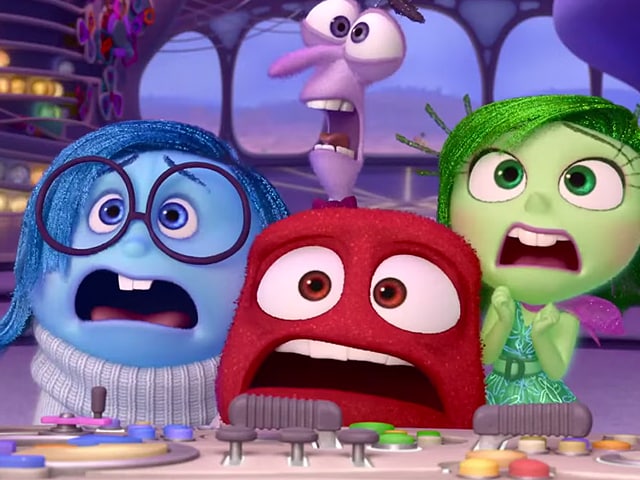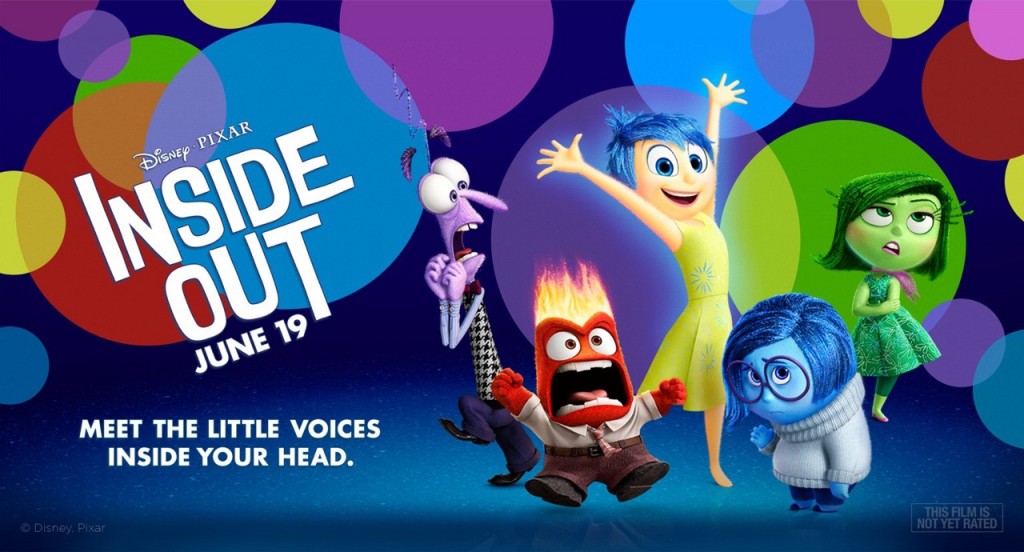

They're in her phone!") Riley's mental terrain has the jumbled, brightly colored, vacu-formed design of mass market toys or board games, with touches that suggest illustrated books, fantasy films (including Pixar's) and theme parks aimed at vacationing families (there are "islands" floating in mental space, dedicated to subjects that Riley thinks about a lot, like hockey). ("Phone numbers?" grouses a worker in Riley's memory bank. The heroine's memories are represented by softball-sized spheres that are color-coded by dominant emotion (joy, sadness, fear and so forth), shipped from one mental location to another through a sort of vacuum tube-type system, then classified and stored as short-term memories or long-term memories, or tossed into an "abyss" that serves the same function here as the trash bin on a computer. The controller hears what the other emotions are saying, and Sometimes Joy is the dominantĮmotion, sometimes Fear, sometimes Sadness, etc., but never to theĮxclusion of the others. There's a master control room with a board that the five major emotions
#MEANING OF INSIDE OUT MOVIE SKIN#
( Lewis Black), a flat-topped fireplug with devilish red skin and a middle-manager's nondescript slacks, fat tie and short-sleeved shirt. Who's a rich green, and has a bit of a " Mean Girls" vibe and Anger Smith), who's soft and blue and recessive Fear ( Bill Hader), a scrawny, purple,īug-eyed character with question-mark posture Disgust ( Mindy Kaling), Looks a little bit like Tinkerbell without the wings Sadness (Phyllis "cartoonish" characters: Joy ( Amy Poehler), a slender sprite-type who Riley's emotions are determined by the interplay of five overtly Move them from Minnesota to San Francisco, separating her from her friends. Riley ( Kaitlyn Dias), who's depressed about her mom and dad's decision to

You can be respectful at the same time you are “bold” on a business argument.The bulk of the film is set inside the brain of young I believe challenging each other in a respectful way is a crucial part of successful organizations. + What the leader really wanted: he wanted to give his honest opinion, asking powerful questions to really take the discussion to the next level.įood for thought: would Apple be what it is today without Steve Jobs and Woz having any argument? Would Facebook be what it is today without any argument? + Consequences: You lose a leader that really “tell it like it is”, you contribute to an artificial scenario where “everything is awesome” (I call “Lego Movie” business) + Follow up action: “OMG, that’s a derailleur, let’s reprimand this individual” + Impression: “That leader had a business argument with other people” What a wonderful post Dan! Recently I was discussing that with a couple of other leaders because sometimes I’m under the impression “derailleurs” are being misunderstood and diversity of opinions are getting lost in the name of a “100% politically correct” environment. What positive role do you see for dark emotion? Note: This post is about sadness, not depression. Are you worried about a future failure? Create contingency plans, for example. Focus:įocus matters most when you experience contrasting emotions.

Leaders often feel excited when things go well and worried about the next problem at the same time. You might feel sad about a failure, but hopeful about what you’re learning, for example. People feel contrasting emotion at the same time.
#MEANING OF INSIDE OUT MOVIE MOVIE#
But, there comes a point in the movie where Joy realizes Sadness plays an important role in Riley’s life. You may have felt a little proud of yourself, while watching, if you identified with Joy. If you watched the movie with a person who leans toward sadness, you probably elbowed them and whispered, “That’s you,” when Sadness appeared on the screen.

In the movie, “ Inside Out,” the main characters are the emotions of a young girl named Riley. If you equate wrong with doing harm, bitterness is wrong. It’s what you do with them that counts.Īnger that becomes bitterness harms everyone it touches. The way leaders deal with dark emotion determines the direction of their leadership.įeelings, for the most part aren’t right or wrong. It’s more challenging to deal with sadness, anger, or bitterness than joy.


 0 kommentar(er)
0 kommentar(er)
